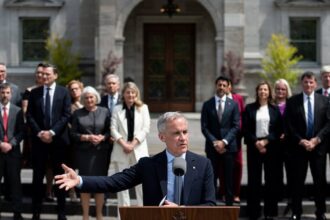In the shadows of Parliament Hill, a consequential reshaping of power is underway as Prime Minister Mark Carney prepares for his first major cabinet shuffle since forming government. The political corridors are abuzz with speculation about whether Carney will favor his high-profile rookie MPs or lean on seasoned parliamentary veterans to navigate increasingly complex domestic and global challenges.
“The tension between new blood and experience is particularly acute for Carney,” notes political strategist Denise Ramirez. “He campaigned on bringing fresh perspectives to government, but now faces the reality that effective governance often requires institutional knowledge.”
Several newly elected MPs with impressive credentials have already caught Ottawa’s attention. Former Bank of Canada economist Priya Sharma and climate scientist Dr. James Wilson entered Parliament with substantial subject expertise but limited political experience. Meanwhile, veteran MPs like Catherine McKenna and François-Philippe Champagne represent the institutional memory and parliamentary savvy that could prove invaluable for a prime minister still finding his footing in the legislative arena.
Carney’s decision carries significant political implications beyond simple personnel choices. As CO24 Politics reported last month, the government faces mounting pressure on housing affordability, healthcare reform, and economic management amid global uncertainty. His cabinet composition will signal priority policy areas and potentially reshape interdepartmental dynamics for years to come.
“Cabinet building isn’t just about individual merit—it’s about creating a functional team,” explains Dr. Eleanor Hughes, professor of political science at Queen’s University. “Carney needs ministers who can deliver on policy promises while also effectively managing their departments and defending government actions in Question Period.”
Regional considerations further complicate the calculus. The government’s tenuous support in Western provinces demands careful representation, while Quebec’s distinct interests require ministers who can effectively communicate in both official languages. Sources within the Prime Minister’s Office, speaking on condition of anonymity, suggest Carney is particularly concerned with maintaining gender parity and increasing Indigenous representation in his front bench.
Economic portfolios may see the most dramatic shifts. With inflation concerns lingering and trade relations with the United States requiring delicate management, CO24 Business analysis suggests Finance, International Trade, and Innovation ministries could undergo significant changes. The Prime Minister’s background in finance means these appointments will be watched especially closely by markets and investors.
“Carney understands the economic stakes better than most prime ministers,” says former deputy minister William Chen. “He’ll want economic ministers who share his vision but can also translate complex policies to the public in ways he sometimes struggles to do himself.”
Parliamentary insiders point to several MPs as potential beneficiaries of the shuffle. Three-term MP Anita Anand, widely respected across party lines, could see her responsibilities expanded. First-term MP and former tech executive Sasha Patel is rumored for a promotion after impressing in committee work. And veteran MP Navdeep Bains may return to cabinet following his brief departure from politics.
The opposition stands ready to critique whatever choices emerge. Conservative leader Pierre Poilievre has already framed the upcoming shuffle as “rearranging deck chairs on a sinking ship,” while NDP leader Jagmeet Singh questions whether any configuration can deliver on the affordable housing promises central to the confidence and supply agreement between their parties.
As final decisions approach, Canadians across the country watch with interest. The cabinet Carney assembles will not only shape policy direction but also determine which voices have the prime minister’s ear during challenging times ahead. Beyond personality and partisan considerations, these appointments will influence how Canada News unfolds in areas from climate action to healthcare reform.
When the new cabinet is sworn in next week, will Canadians see a government that prioritizes fresh thinking and new faces, or one that values the steady hand of experience? Perhaps the most effective cabinet would find the delicate balance between both.

























